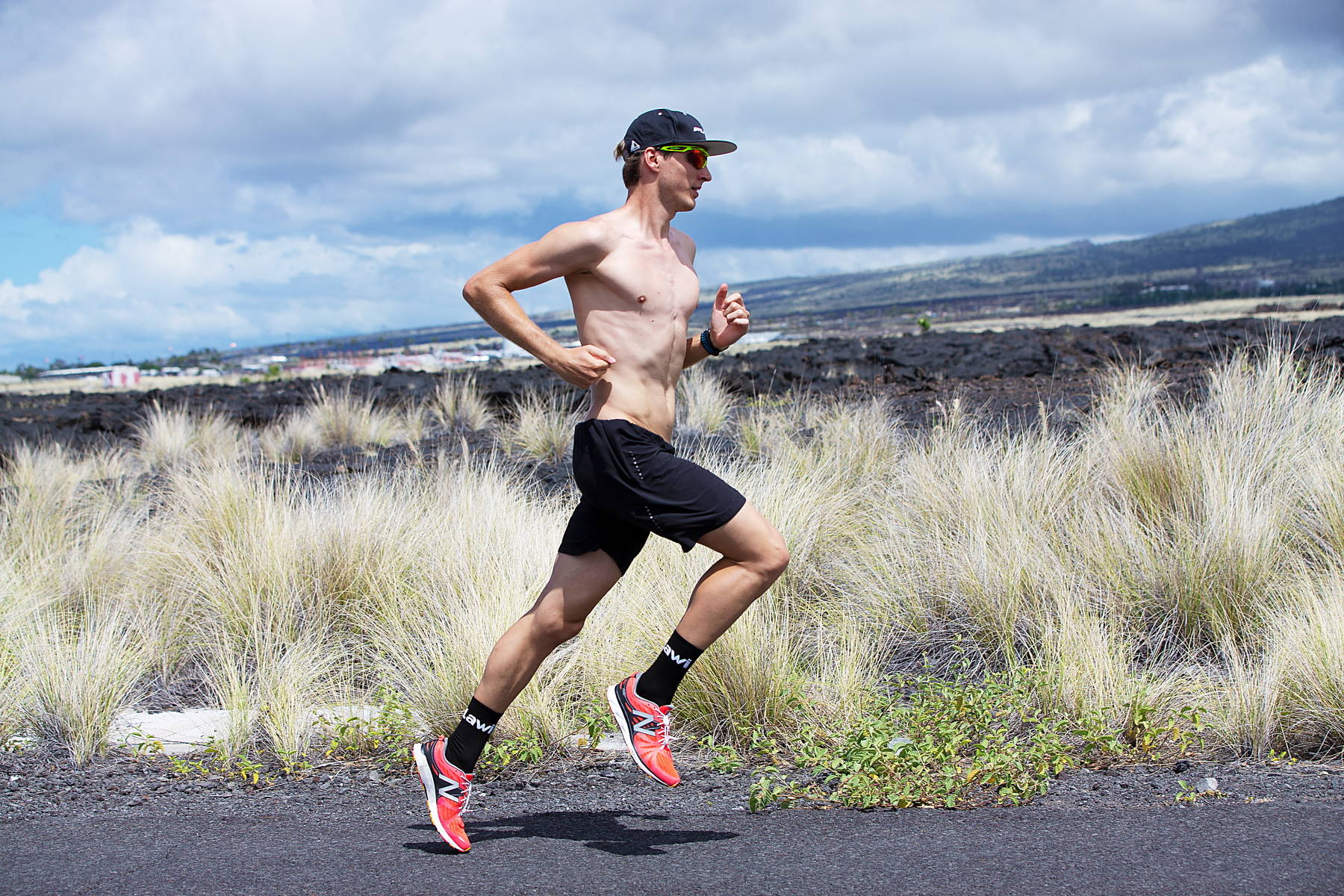Unerträgliche Hitze – jedes Jahr stöhnen Athleten über die unerbittlichen Bedingungen auf dem Queen K Highway. Dann, wenn es sowieso schon richtig hart wird, wird es auch noch richtig heiß. Unbestritten einer der entscheidendsten Faktoren im Rennen. Doch ist der Ironman Hawaii tatsächlich das heißeste Parkett im Triathlon-Zirkus? Wir haben das Thermometer ausgepackt…
Nach August und September mit einer Durchschnittstemperatur von 24,9 °C, gehört der Oktober mit 24,5 °C im Monatsschnitt zu den wärmsten Monaten des Jahres auf der Insel im Pazifischen Ozean. Dabei fallen im Oktober durchschnittlich 75 Millimeter Regen über den Monat hinweg – im Vergleich zum trockensten Monat Februar mit 55 Millimetern einiges. Der Oktober 1986 war mit einem Monatsschnitt von 34,5 °C der heißeste je Gemessene.
Fraglos ist die Hitze also einer der entscheidenden Faktoren im Rennen.
Heiß, heißer, am heißesten?
Doch es gibt auch noch andere Rennen für Freunde der hohen Temperaturen. Der Ironman Langkawi beispielsweise. Seit vergangenem Jahr startet das Rennen stets im November – auf der malayischen Insel mit 31 °C im Schnitt ein eher kühler Monat. Ähnlich heiß wird es im November auf der Insel Phuket. Wenn der traditionelle Laguna Phuket Triathlon startet, darf man mit Temperaturen um die 30°C rechnen.
Und selbst ohne große Anreise kann es manchmal richtig heiß hergehen: So geschehen beim diesjährigen Rekordrennen in Frankfurt, bei dem bis zu 35 °C verzeichnet wurden. Oder auch dem Challenge Roth im vergangenen Jahr, der rund 33°C auf die Thermometer brachte.
Hawaii – mehr als nur heiße Luft
Auf den ersten Blick scheint der King of Kona also noch lange nicht der King of Heat zu sein. Auf den zweiten, etwas genaueren Blick jedoch, wird klar, warum Kona der Glutofen der Triathlonwelt ist. Denn gleich mehrere Faktoren sorgen dafür, dass die gefühlte Hitze viel mehr als „nur“ die Gemessene ist.
Kein Schatten
Ein kleines Stück durch den Wald, oder ein Kilometer im Schatten von Häusern – das kann bei Hitze so angenehm sein. Denn dort kann man der direkten Sonneneinstrahlung und den langwelligen Strahlen, die die Wärme des Sonnenlichts tragen, zumindest für kurze Zeit entgehen.
Auf der Strecke des Ironman Hawaii sucht man ein Schattenplätzchen jedoch vergebens. Kein Baum, kein Strauch – gnadenlose Sonne den gesamten Tag.
Der Hitzeindex
Im Winter lässt einen der Windchill schneller auskühlen, als einem lieb ist. Dabei bezeichnet dieser theoretische Faktor die gefühlte Temperatur, wenn einem der eisige Wind um die Nase weht – und die kann erheblich unter der tatsächlich Gemessenen liegen.
Einen ähnlichen Faktor gibt es auch bei heißem Wetter. Der „Hitzeindex“ beschreibt ebenfalls die gefühlte Temperatur. Bei warmem und heißem Wetter ist es jedoch vor allem die Luftfeuchtigkeit, die das Temperaturempfinden beeinflusst. Ab einer Temperaturspanne über 26 °C (je nach Berechnungsmodell) kommt dieser Hitzeindex zu tragen. Umgebung mit hoher Luftfeuchtigkeit wird dann als heißer empfunden als Umgebung mit trockener Luft.
Der Grund: Die körpereigene Klimaanlage heißt Schweiß. Beim Verdunsten des Schweißes auf der Hautoberfläche wird Energie verbraucht, was zur Abkühlung führt. Je höher allerdings die Luftfeuchtigkeit der Umgebungsluft ist, desto weniger bzw. langsamer kann der Schweiß unserer Haut dorthin abgegeben werden. Damit wird die natürliche Kühlung unseres Körpers verlangsamt und im schlimmsten Fall sogar gestoppt.
Nehmen wir also einmal an, am Renntag hat es 28 °C, bei einer Luftfeuchtigkeit von 75% – und schon haben wir eine gefühlte Temperatur von 31.4 °C.
Hitze von oben, Hitze von unten
Ein weiterer Faktor, der die gefühlte Temperatur ansteigen lässt, ist der schwarze Lava-Asphalt, der auf der gesamten Insel vulkanischen Ursprungs zu finden ist. Ebenso, wie das schwarze Lavagestein, das besonders rund um Kona die Landschaft dominiert. Sie „reflektieren“ die Hitze der Sonne, sodass man besonders auf der Laufstrecke nicht selten das Gefühl hat, auf dem Heißen Queen K dahinzuschmelzen.





















1 Kommentar
Andrej Heilig
Cooles Foto